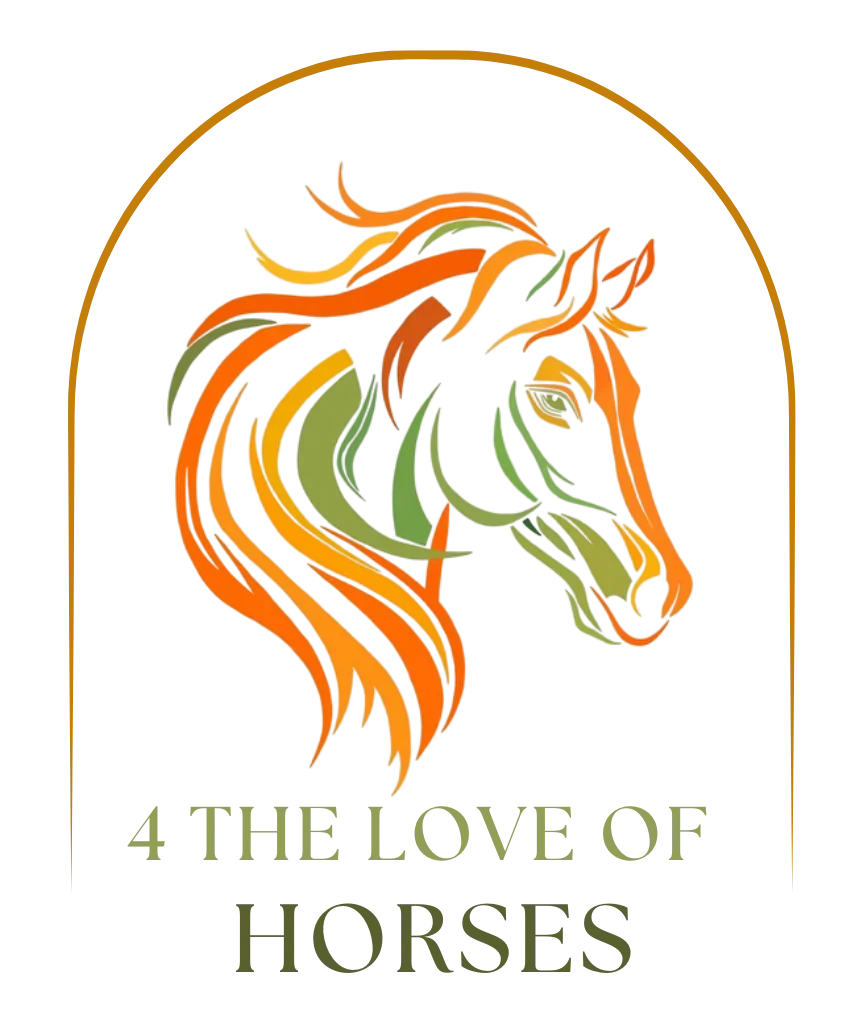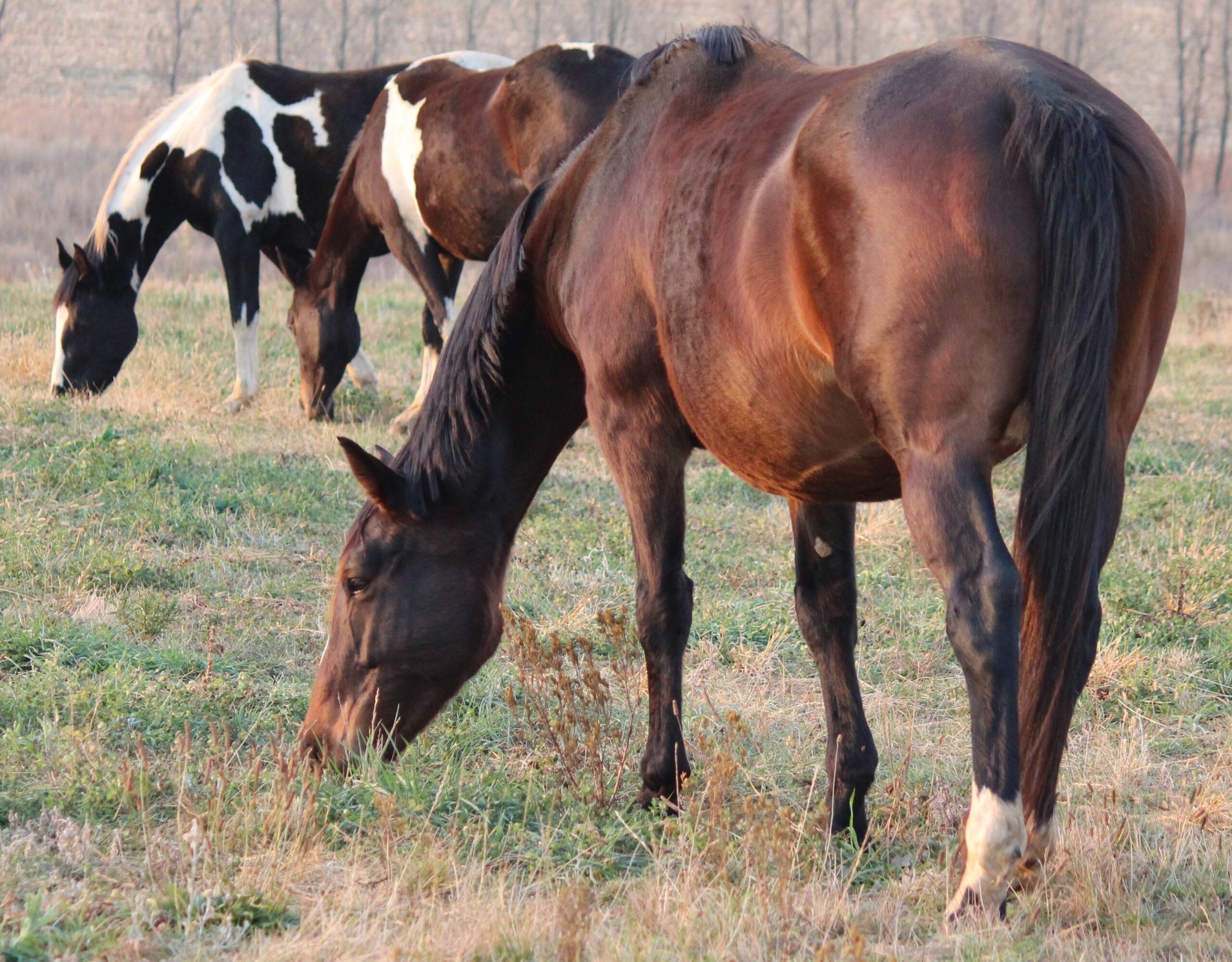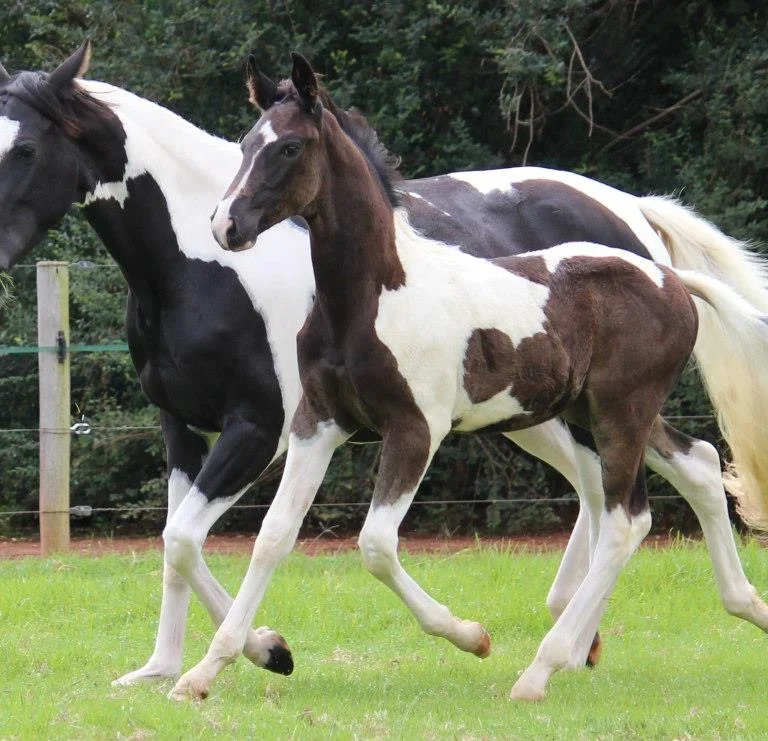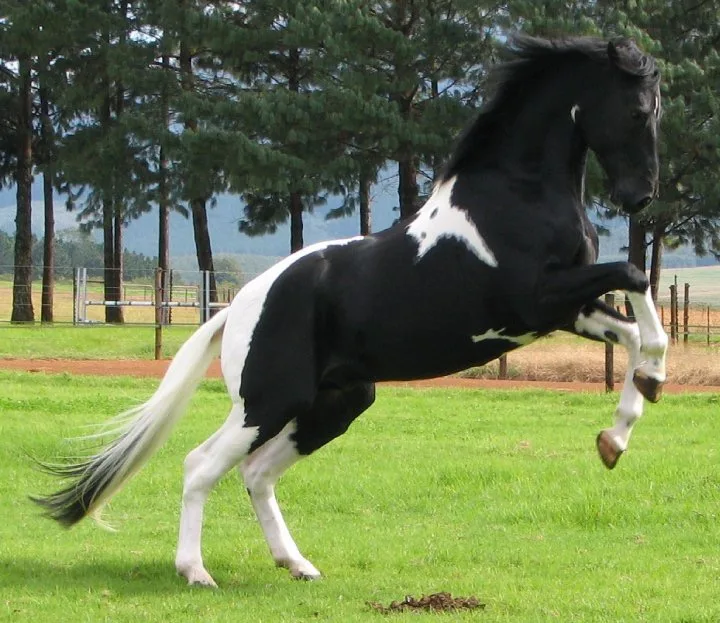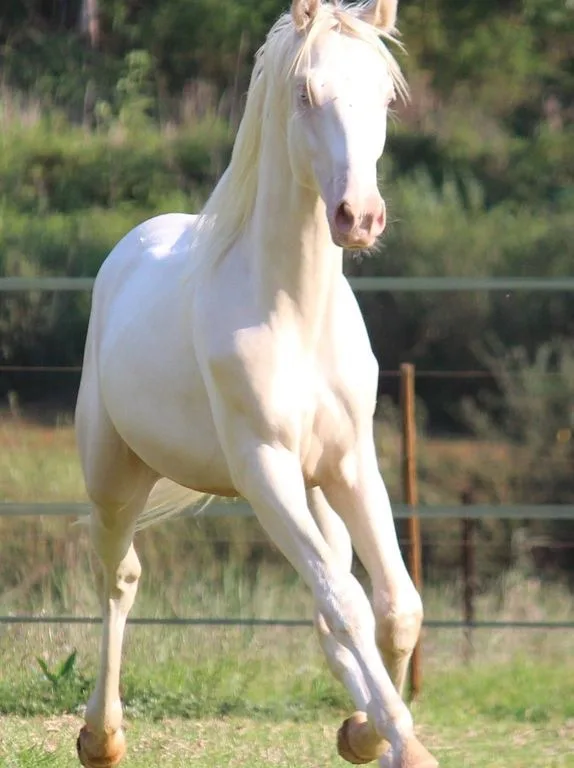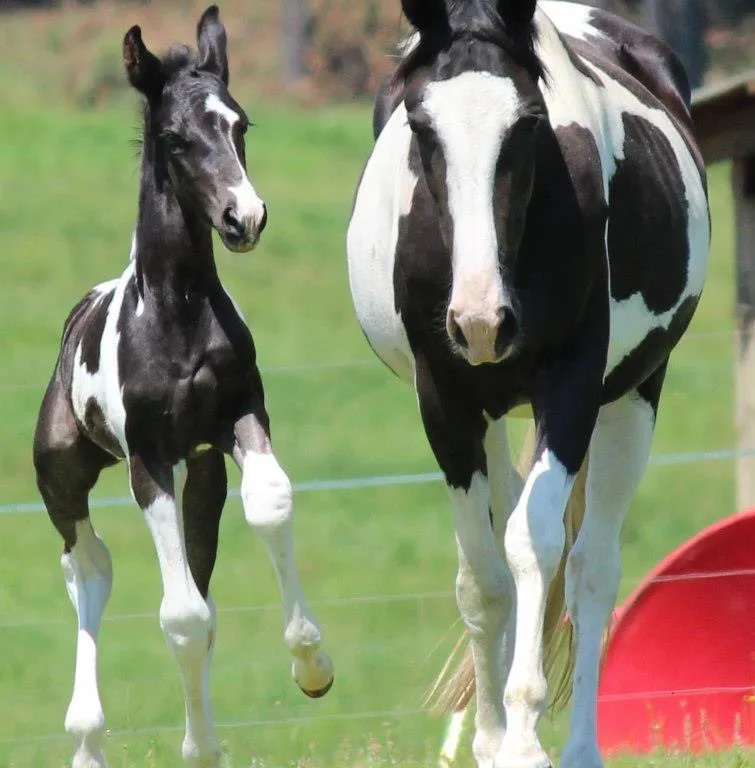Cushing’s Disease in Horses: A Comprehensive Guide for Horse Owners
Cushing’s disease is also known as pituitary pars intermedia dysfunction (PPID) and is a hormonal disorder that affects horses. It is caused by a malfunction of the pituitary gland, which leads to an overproduction of certain hormones. This results in a wide range of symptoms that can impact the overall health and well-being of your horse.
Symptoms
There are many different symptoms of Cushing’s disease in horses, the most common ones are:
- Excessive sweating and/or failure to sweat
- Increased thirst and urination
- Weight loss or gain
- Abnormal fat distribution is usually found on the neck, tailhead, and other areas of the body
- Lethargy and fatigue and decreased tolerance of exercise.
- Laminitis
- Muscle wasting and/or pot-bellied appearance
- Increased susceptibility to infections and delay in wound healing
- A thick coat that does not moult out in warmer weather
If your horse is showing any of these symptoms you must get your vet to evaluate your horse by performing diagnostic tests to confirm the diagnosis. By detecting Cushing’s early you can provide treatment to improve your horse’s quality of life
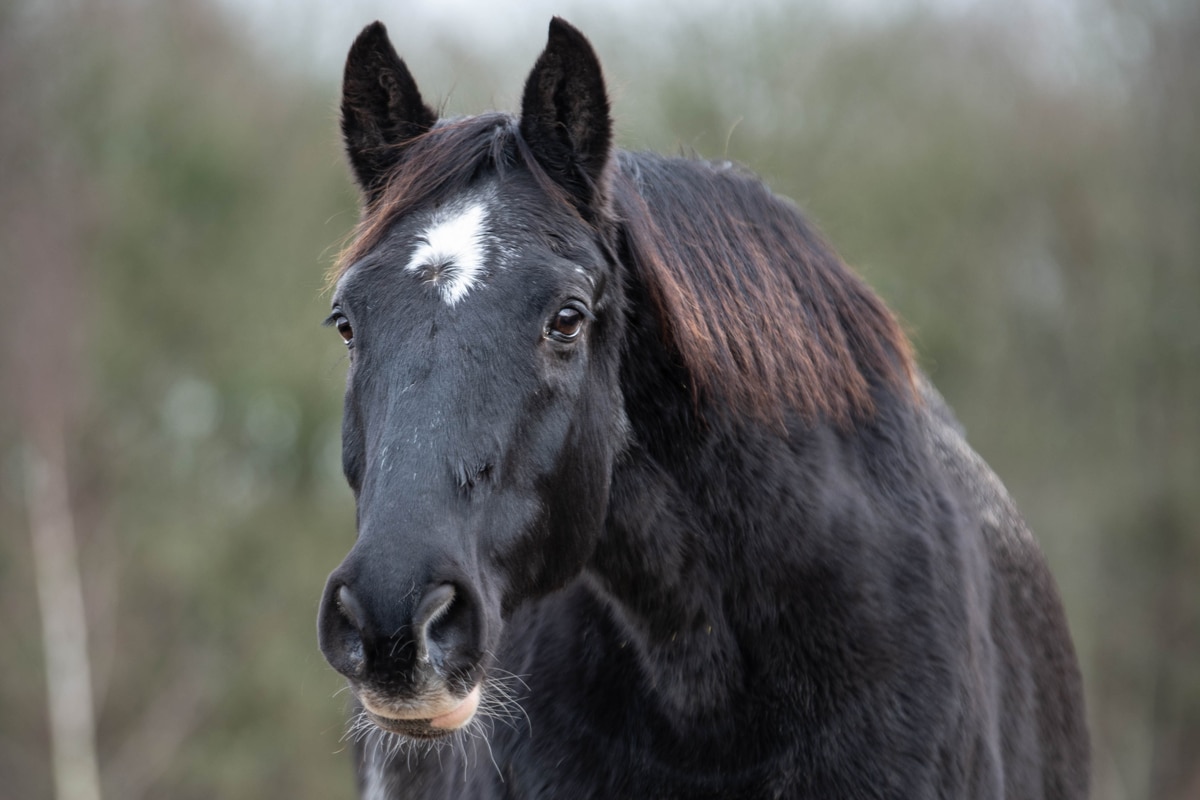
Causes
The exact cause of Cushing’s disease is not fully understood but is believed to be related to dysfunction of the pituitary gland, a small gland at the base of the brain that is responsible for regulating hormone production through the horse’s body.
In Cushing’s disease, this pituitary gland produces excessive amounts of adrenocorticotropic hormone (ACTH), which stimulates the production of cortisol which is a hormone that helps the body respond to stress.
While the underlying cause of this pituitary dysfunction of horses with Cushing’s disease is not clear there are some factors that are thought to increase the risk of developing Cushing’s:
- Age: Cushing’s disease is most often seen in horses over 15 years old, although it can occur in horses of any age.
- Genetics: It is thought that there might be a genetic factor predisposition to Cushing’s disease as certain breeds, such as ponies and Morgans, are more prone to get it.
- Immune function: Some researchers believe that Cushing’s disease might be related to an abnormal immune response that leads to inflammation and damage to the pituitary gland.
- Environmental factors: exposure to certain toxins or stressors may increase the risk of your horse developing Cushing’s disease, this has not been definitively proven though.
Even though these symptoms may increase the possibility of your horse developing Cushing’s disease, not all horses with these risk factors will develop the condition. There are most likely more factors that cause the development of Cushing’s that researchers have not yet found
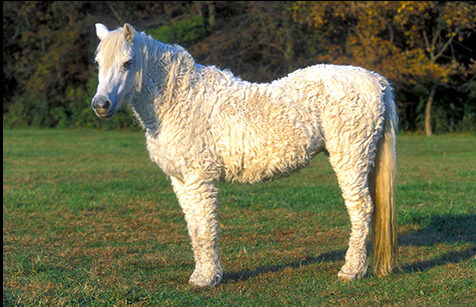
Diagnosis
Diagnosing Cushing’s disease in horses can be challenging, as the symptoms of the condition can be subtle and may mimic those of other health issues. However, several diagnostic tests can be used to confirm or rule out a diagnosis of Cushing’s disease, including:
- ACTH stimulation test: This is the most commonly used test for diagnosing Cushing’s disease in horses. During this test, a small amount of synthetic ACTH is injected into the horse, and blood samples are taken at timed intervals to measure the horse’s cortisol levels. Horses with Cushing’s disease will typically have higher-than-normal cortisol levels in response to the ACTH injection.
- Dexamethasone suppression test: This test involves giving the horse a small dose of the steroid medication dexamethasone, which should normally suppress cortisol production in a healthy horse. Blood samples are taken before and after the medication is given to measure cortisol levels. Horses with Cushing’s disease may have high cortisol levels even after receiving dexamethasone.
- Urine cortisol: creatinine ratio test: This test involves collecting a urine sample from the horse and measuring the ratio of cortisol to creatinine in the urine. Horses with Cushing’s disease may have a higher ratio than normal.
- Low-dose dexamethasone suppression test: This test is similar to the standard dexamethasone suppression test, but uses a lower dose of dexamethasone. This can be a useful test in horses with early or mild Cushing’s disease, as it may detect abnormalities that the standard test misses.
It is important to note that no single diagnostic test is 100% accurate and that veterinarians may use a combination of tests to confirm a diagnosis of Cushing’s disease. Additionally, some horses may have high cortisol levels for reasons other than Cushing’s disease, so it is important to rule out other health issues that may be causing similar symptoms.
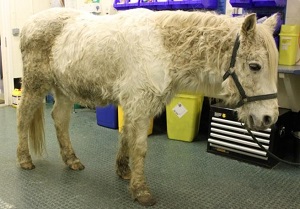
Treatment
While there is no cure for Cushing’s disease, there are several treatment options that can help manage the symptoms and improve a horse’s quality of life. The goal of treatment is to reduce the production of cortisol and improve the horse’s overall health.
- Medications: Several medications are available that can help regulate hormone production in horses with Cushing’s disease. These medications include pergolide and cyproheptadine, which can help reduce the amount of ACTH produced by the pituitary gland. These medications are typically given orally and must be carefully monitored to ensure that they are effective and well-tolerated by the horse.
- Diet: Horses with Cushing’s disease may benefit from a specialized diet that is low in sugar and starch, as these types of feed can exacerbate the symptoms of the condition. Feeding high-quality hay and limiting access to lush pasture can also help manage the horse’s weight and prevent insulin resistance.
- Exercise: Regular exercise can help maintain the horse’s muscle mass and improve their overall health. However, horses with Cushing’s disease may tire more easily and may not be able to tolerate strenuous exercise. It is important to work with a veterinarian to develop an exercise plan that is appropriate for the horse’s individual needs.
- Hoof care: Horses with Cushing’s disease are at increased risk of developing laminitis, a painful condition that affects the hooves. Regular hoof care, including frequent trimming and monitoring for signs of lameness, can help prevent this complication.
Treatment for Cushing’s disease must be individualized for each horse. The effectiveness of treatment can vary depending on the severity of the condition and the horse’s overall health. Regular veterinary care and monitoring are essential for managing the symptoms of Cushing’s disease and helping the horse maintain a good quality of life.
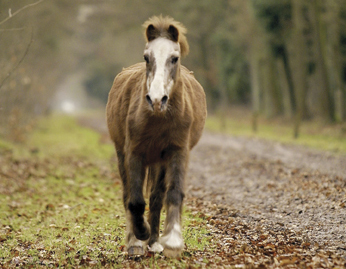
Natural Remedies
While there is no cure for Cushing’s disease in horses some natural remedies may help manage the symptoms and improve the horse’s overall health.
Here are some natural remedies that may be helpful for horses with Cushing’s disease:
- Herbs: Certain herbs may have medicinal properties that can help regulate hormone production in horses with Cushing’s disease. Some commonly used herbs include chasteberry, ginseng, and milk thistle. However, it’s important to note that herbs can have side effects and should only be used under the guidance of a veterinarian.
- Diet: Feeding a diet that is low in sugar and starch can help manage the symptoms of Cushing’s disease. Horses with Cushing’s disease may benefit from a diet that is high in fiber and low in carbohydrates, such as beet pulp, hay pellets, and soaked hay. Additionally, limiting access to pasture and avoiding grain-based feeds can also help manage the horse’s weight and prevent insulin resistance.
- Exercise: Regular exercise can help improve the horse’s muscle mass and overall health. However, horses with Cushing’s disease may tire more easily and may not be able to tolerate strenuous exercise. It’s important to work with a veterinarian to develop an exercise plan that is appropriate for the horse’s individual needs.
- Acupuncture: Acupuncture may be a helpful adjunct therapy for horses with Cushing’s disease. Acupuncture can help regulate hormone production and improve blood flow to affected organs, which can help manage the symptoms of the disease.
While natural remedies may help manage the symptoms of this disease, they should not be used as a replacement for prescription medications or regular veterinary care. It is important to work with a veterinarian to develop a treatment plan that is appropriate for the horse’s individual needs.
reduce the risks
There are a few things you can do to help reduce your horse’s risk of developing Cushing’s disease or to lessen the severity of the disease if it does occur. Here are some tips to consider:
- Provide a low-sugar, low-starch diet: Horses that are given a diet high in sugar and starch are at a greater risk of developing Cushing’s disease. To help reduce your horse’s risk, provide a diet that is low in sugar and starch. This can be achieved by feeding high-quality hay and limiting access to pasture or providing a dry lot if the horse is prone to gaining weight.
- Maintain a healthy weight: Overweight horses are more likely to develop Cushing’s disease, so it’s important to maintain a healthy weight for your horse. If your horse is overweight, work with your veterinarian to develop a weight loss plan that is appropriate for your horse’s individual needs.
- Practice good parasite control: Horses with heavy parasite loads are more likely to develop Cushing’s disease, so it’s important to practice good parasite control. This can include regular deworming and manure management.
- Provide regular exercise: Regular exercise can help maintain the horse’s muscle mass and overall health, which can help reduce their risk of developing Cushing’s disease. It’s important to work with a veterinarian to develop an exercise plan that is appropriate for the horse’s individual needs.
- Monitor for early signs of the disease: While there is no way to prevent Cushing’s disease, early detection, and treatment can help manage the symptoms and improve the horse’s quality of life. Keep an eye out for early signs of the disease, such as excessive thirst and urination, a long or curly hair coat, or a pot-bellied appearance.
It’s important to note that while these tips can help reduce your horse’s risk of developing this disease, the disease can still occur in horses even with the best care. Regular veterinary care and monitoring are essential for managing the symptoms of Cushing’s disease and helping the horse maintain a good quality of life.
Conclusion
Cushing’s disease is a complex hormonal disorder that can have a significant impact on a horse’s health and quality of life. While the disease is not curable, early detection and appropriate management can help manage the symptoms and improve the horse’s overall well-being.
Symptoms can be varied and may include excessive thirst and urination, a long or curly hair coat, and a pot-bellied appearance. Diagnosis typically involves blood tests and imaging to evaluate hormone levels and rule out other underlying conditions.
Treatment for this disease may include prescription medications, such as pergolide, that can help regulate hormone production and manage the symptoms of the disease. Additionally, natural remedies, such as herbs, diet, exercise, and acupuncture, may help manage the symptoms of the disease and improve the horse’s overall health.
Prevention of this disease involves providing a low-sugar, low-starch diet, maintaining a healthy weight, practicing good parasite control, providing regular exercise, and monitoring for early signs of the disease.
Overall, managing Cushing’s disease in horses requires a team effort between the horse owner and veterinarian. With appropriate management, many horses with Cushing’s disease can maintain a good quality of life for many years.
FAQ
Links for further research
Equine Cushing’s disease – Fact Files Cushing’s disease is more correctly known as pituitary pars intermedia dysfunction (PPID). It involves the pituitary gland, which is a gland located …
Cushing’s Disease in Horses Also known as pituitary pars intermedia dysfunction (PPID), Cushing’s disease is the most common endocrine disorder diagnosed in horses.
Equine Cushings Disease Equine Cushing’s disease, also known as Pars Pituitary Intermedia Dysfunction (PPID) is a disorder of the horses‘ endocrine system (hormonal system). Equine …
